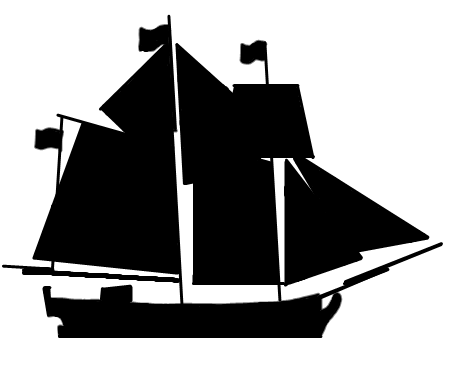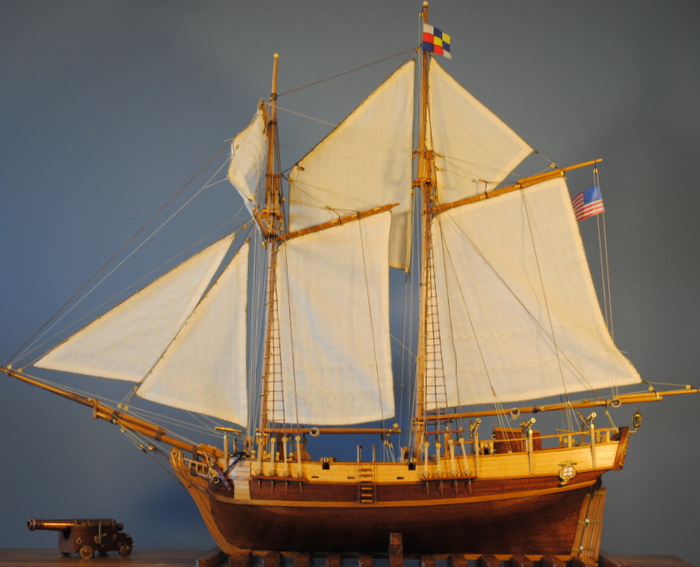Independence, US Navy Sloop (1780)
Particulars
Vessel type: Continental Navy sloop
Builder: a yard in Baltimore, Maryland
Date Deliver: September 1776
Scrapped: Wrecked April 24, 1778
Length on deck: about 70 feet
Length over all: about 120 feet
Draft: about 8 feet.
Construction Material: Wood
Rig Type: Topsail Schooner
Crew Size: About 40 in fighting trim
Propulsion Plant: Sail only
Cruising Speed: 6 knots average on long voyages in good conditions
Maximum Speed: 10 knots in idela conditions
Armament: 10 guns
Vessel Description and History
The USS Independence was built in Baltimore in 1776 as one of the first Continental Navy vessels.
She rated as a sloop, which in navy terminology is a multipurpose vessel smaller than a frigate. She is schooner rigged and carried 10 guns.
Independence sailed in September 1776 under the command of Captain John Young for the Caribbean to protect American merchant vessels in the West Indies. She later sailed for France in mid 1777, arriving in L’Orient in late September with important diplomatic dispatches. During the voyage Independence captured two British vessels. Her crew bore witness to the salute of Ranger under the command of John Paul Jones on February 14, 1778, in Quiberon Bay, the first salute by a foreign warship to a naval vessel under the US national flag. (The Dutch had already saluted the US flag on October 17, 1776, but it was not yet the classic Stars and Stripes and was from the fort in St. Eustatius.) John Paul Jones also embarked on Independence and received further salutes.
Independence foundered while attempting to enter the Okracoke Inlet in North Carolina on April 24, 1778.
Technical Model Description
The model was built by Henry Scheafer in 2005 from an Italian kit.


